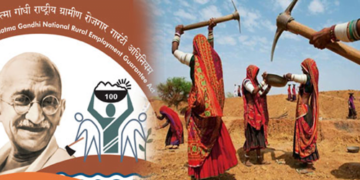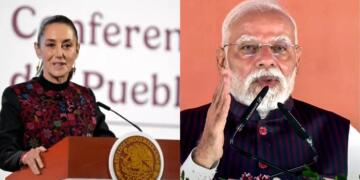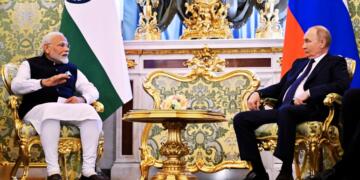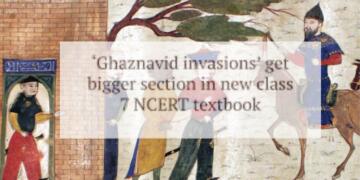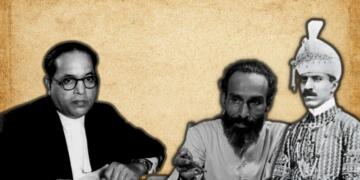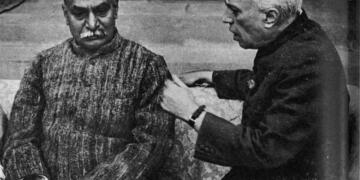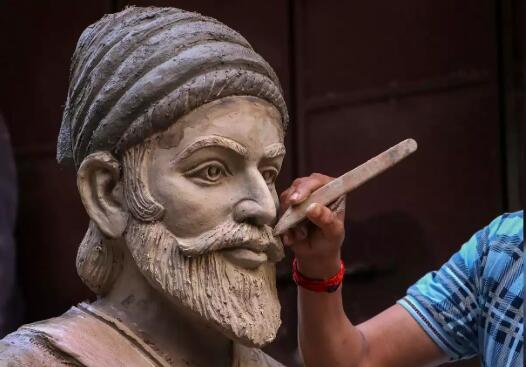On this sacred day in 1630, the great Jijabai brought into this world not just a son, but an Ansh of Shiva himself Chhatrapati Shivaji Maharaj, the savior of Hindu Dharma. In an era when darkness loomed over Bharat, when the mighty and merciless Mughal Emperor Aurangzeb sought to wipe Hindu civilization from existence, it was Chhatrapati Shivaji Maharaj who rose like a divine flame, defying the storm of Islamism with unwavering courage of Dharma.
At just 16, he stood tall in Pune, his heart burning with the fire of Swarajya and his sword Bhavani gleaming with the resolve of Dharma. With the blessings of his mother Jijabai and the wisdom of his Samarth Ramdas, he carved out a kingdom where the saffron flag soared high, defying Islamic tyranny. Aurangzeb, the most ruthless of Mughal rulers, dreamt of Hindu annihilation but before him stood Chhatrapati Shivaji Maharaj, a warrior whose valor made the mighty Mughal empire tremble.
Chhatrapati Shivaji Maharaj was not just a king; he was a divine force, a Vibhuti, as Sri Aurobindo rightly proclaimed. It is upon his shoulders that our thriving Hindu society stands today. His birth was not just an event, it was the dawn of a Hindu revivalism, a promise that Dharma shall always prevail against all odds!!
Early Life of Chhatrapati Shivaji Maharaj
Shivaji Maharaj was born on February 19, 1630, in the Shivneri Fort to Shahaji Bhosale and Jijabai. His mother, Jijabai, played a crucial role in shaping his character, instilling in him a deep love for Hindu Dharma from an early age. She narrated stories of Ramayana, Mahabharata, and great Hindu warriors, inspiring him to dedicate his life to the protection of Hindu civilization. Under the guidance of his mentor Dadoji Kondadev, Shivaji mastered warfare, administration, and the principles of Dharma, which would later define his reign. His spiritual inclination and devotion to Hindavi Swarajya (self-rule) set him apart as not just a warrior but a guardian of Hindu traditions.
Restoration of Hindu Temples and Religious Freedom
One of the most remarkable ways Chhatrapati Shivaji Maharaj protected Hindu civilization was by safeguarding temples from destruction. During his time, several Hindu temples like Kashi Vishwanath Temple were destroyed by invading forces, particularly under Aurangzeb’s reign. Chhatrapati Shivaji Maharaj actively took measures to restore and rebuild these places of worship. He also ensured that the revenue from his kingdom was used to support Hindu religious institutions. His governance was marked by respect for all religious people, but he made sure that Hindu culture, which had suffered centuries of oppression, was revived and strengthened.
Military Campaigns Against Oppressors
Chhatrapati Shivaji Maharaj‘s military campaigns were not just about expanding his kingdom but also about liberating Hindus from oppressive rulers. The Mughal Empire under Aurangzeb and the Deccan Sultanates frequently imposed jizya (a tax on non-Muslims) and destroyed temples. Chhatrapati Shivaji Maharaj actively resisted these acts and waged wars to reclaim Hindu lands. His guerrilla warfare tactics, known as “Ganimi Kava,” enabled his smaller army to defeat much larger and well-equipped forces.
A defining moment in his resistance was the raid on Shaista Khan’s camp in Pune. The Mughal governor had been oppressing local Hindus, and Chhatrapati Shivaji Maharaj’s daring attack not only weakened Mughal authority but also sent a strong message that Hindus would not accept subjugation silently. His campaigns in the Konkan, Maharashtra, and parts of Karnataka ensured that Hindu culture thrived in these regions despite external threats.
Promotion of Hindu Administration and Culture
Chhatrapati Shivaji Maharaj was instrumental in establishing a Hindu administrative system that provided justice and fair governance. Unlike the prevailing Persian-dominated court systems of the time, Chhatrapati Shivaji Maharaj reintroduced Sanskrit and Marathi in his administration. He appointed Hindu officers and encouraged them to take pride in their heritage rather than adopting foreign customs.
The coronation of Chhatrapati Shivaji Maharaj in 1674 was a significant event in Hindu history. For centuries, Hindu rulers had been forced to acknowledge foreign suzerainty, but Chhatrapati Shivaji Maharaj’s coronation as an independent Hindu king was a moment of resurgence. The rituals performed during the ceremony emphasized the revival of Hindu traditions and self-rule. He adopted the title “Chhatrapati”, symbolizing his role as the supreme protector of his people.
A Just and Benevolent Ruler
Shivaji’s governance reflected the ideals of Dharma (righteousness) and Nyaya (justice). Unlike many rulers of his time, he never allowed the wanton destruction of places of worship, even of other religions. When he conquered regions under Muslim rulers, he ensured that their religious structures were not harmed, setting an example of true tolerance. However, he remained firm in his mission to protect Hindus from persecution. He freed many Hindu women and children who were captured and enslaved during enemy raids. Unlike other rulers who encouraged the enslavement of women, Chhatrapati Shivaji Maharaj strictly forbade such practices within his kingdom.
Chhatrapati Shivaji Maharaj’s efforts in protecting Hindu civilization laid the foundation for future resistance against Adharmic forces. His emphasis on Hindu pride, self-rule, and cultural preservation ensured that Hindu traditions continued to flourish despite external pressures. Even today, Chhatrapati Shivaji Maharaj is revered as a guardian of Hindu civilization. His life and legacy continue to inspire millions who see him as the embodiment of courage, justice, and devotion to Dharma. His contributions not only preserved Hindu culture but also reinstated a sense of identity and pride among Hindus, ensuring that their traditions survived and thrived.





